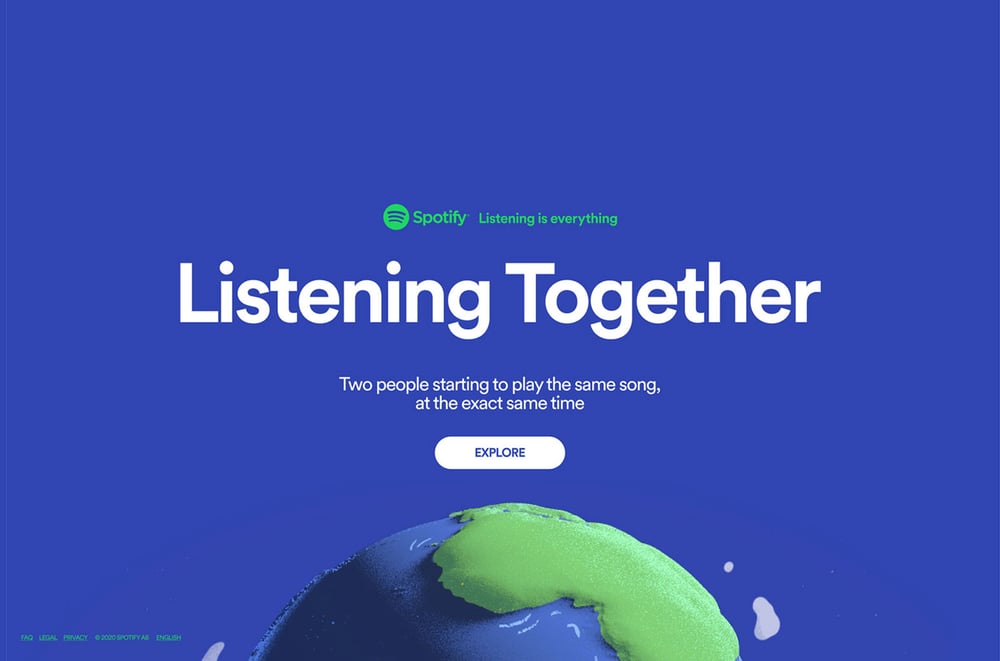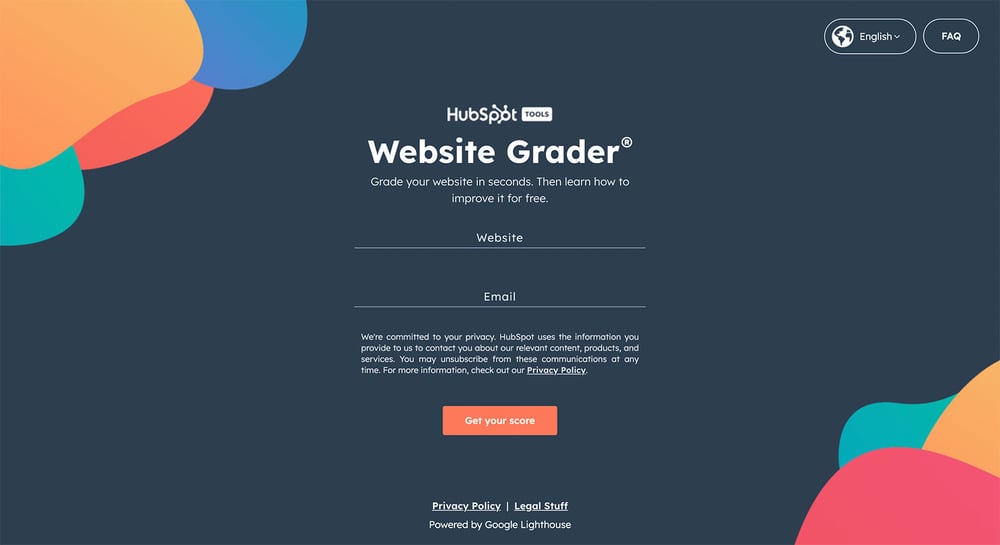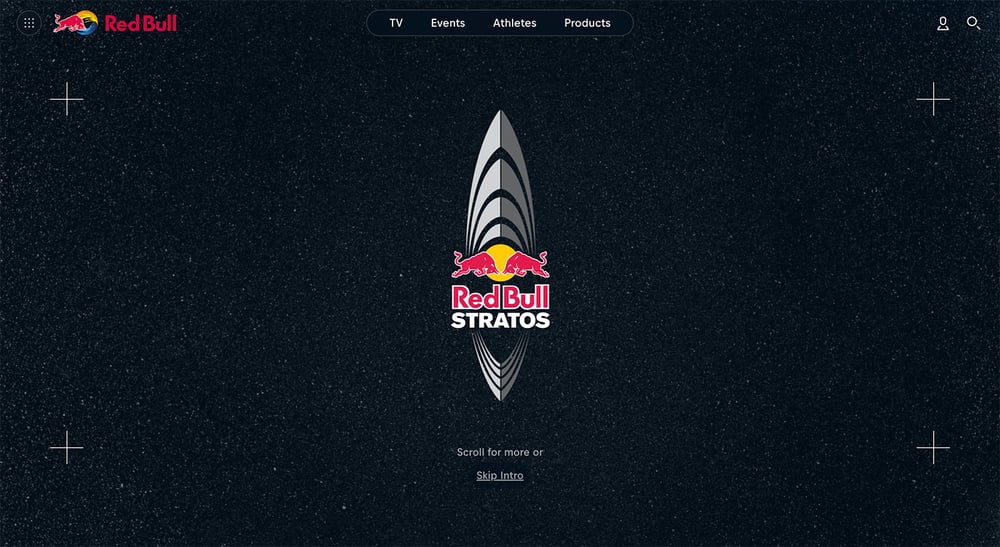Find out what a microsite is, whether your business needs one, and how to create a site that compliments your business.
Summary
Looking for a powerful way to engage your target audience and drive conversions? Creating a microsite might be the answer.
It’s one of the most unique ways to create a focused and immersive experience around a specific campaign or product. But first, you might be wondering: what is a microsite?
A microsite is a separate webpage or a small group of web pages that are designed to provide specific information about a particular topic, product, or service. It is a subdomain of the main website with a separate URL and is generally used to provide a more focused and targeted user experience.
With their ability to deliver high-quality content, targeted messaging, and interactive features, microsites have become a popular tool for businesses looking to stand out in crowded markets and capture the attention of their ideal customers.
We're going to dive into the world of microsites below!
What are the benefits of a microsite?
Microsites have become an increasingly popular tool for businesses to engage with their audience and drive conversions. There are several key benefits to using a microsite:
- Provides a targeted and personalised customer experience: Microsites allow businesses to create a customised experience for their audience based on specific interests or needs. By tailoring content and design to a specific audience, businesses can increase engagement and drive conversions.
- Helps improve search engine rankings: Microsites can help businesses improve their search engine rankings by creating targeted content and using specific keywords related to their niche or industry. By having a dedicated microsite, businesses can increase their online visibility and drive more traffic to their main website.
- Allows for better tracking and analytics: Microsites can be designed with specific goals in mind, such as lead generation or product promotion. By setting up tracking and analytics tools, businesses can easily monitor the performance of their microsite and adjust their strategy accordingly.
- Provides a cost-effective way to launch campaigns: Microsites can be a cost-effective way to launch targeted campaigns without the need for a complete website redesign. Businesses can create microsites with specific messaging or branding for a short-term campaign or event, helping them to save on development costs.
- Offers flexibility in design and functionality: Microsites allow for greater flexibility in design and functionality than a typical website. Businesses can experiment with different layouts, features, and content to create a unique and engaging experience for their audience.
Different types of microsites
There are different types of microsites that businesses can design. Based on the end goal that your business wants to achieve, your microsite will land in one of five different categories.
Landing pages
Landing pages are microsites designed to capture leads or promote a specific offer. They usually have a single call-to-action and are optimised for conversion.
These microsites are usually created for paid advertising campaigns, email marketing, or social media marketing. Landing pages are focused and designed to engage visitors with a clear message and a strong offer.
Marketers use landing pages to drive lead generation, promote new products or services, or increase event registrations. In some cases, they can even be used just to collect customer information for a database, such as email addresses for example.
Product launch pages
A product launch microsite is created to promote a new product or service. It can include product demos, specifications, pricing, and other relevant information.
These microsites are designed to generate excitement around a new product or service that can drive sales. Product launch pages can be used to build a targeted email list, engage potential customers, and generate early adopters.
Event pages
Event microsites are created to promote an event, such as a conference, seminar, or webinar. They can provide event details, agenda, speaker bios, and registration forms.
Event pages can be used to drive registrations, promote speakers, and build exposure around the event. They can be optimised for SEO to improve visibility in search engine results pages and shared on social media to increase engagement and visibility.
Campaign pages
A campaign microsite is used to promote a marketing campaign. These can include promotional offers, content, social media integration, and user-generated content.
Campaign microsites are designed to engage customers and prospects, increase brand awareness, and drive conversions.
Content hubs
A content hub, also known as a pillar page, is a microsite that houses a collection of content, such as blog posts, videos, infographics, and whitepapers.
They can be used to showcase a brand's thought leadership, industry expertise, or educational content. Content hubs are designed to engage visitors with valuable content and build a relationship with them over time.
Content hubs can also be used to drive lead generation by offering valuable content in exchange for contact information.
Essential Components of a Microsite
A successful microsite is made up of several components that work together to achieve the desired results. Overall, you need to use five key elements to design a good microsite.
- Unique domain name: A microsite should have its unique domain name. This helps to create a separate online identity for the microsite and makes it easier to track its performance.
- Branded design: Branding is key to making your microsite flourish. This includes elements such as the logo, colours, fonts, and imagery.
- Engaging content: The content of a microsite should be specifically tailored to the audience it is targeting. It should be compelling, relevant, and informative to encourage visitors to engage with the microsite and take action.
- Strong call-to-action: A microsite should have a clear call-to-action (CTA) that encourages visitors to take the desired action. This could be anything from signing up for a newsletter to making a purchase.
- Tracking and analytics tools: To measure the success of a microsite, it is important to have tracking and analytics tools in place. These tools help to monitor the traffic, engagement, and conversions on the microsite, and provide insights to improve its performance over time.
How to create a successful microsite in 5 steps
Creating a microsite requires careful planning, a clear understanding of your goals, and a solid strategy.
Plan your goals first
The first step to building a great microsite is to determine your goals and target audience. Before you start creating a microsite, you need to define your goals and identify your target audience — this will impact the type of microsite you need to create.
You need to make sure that you create a microsite that resonates with your target audience. For instance, if you are creating a microsite for a tech product, you need to provide content that is accurate and up-to-date and use language that is understandable to your audience.
Determine the type of microsite you need
Depending on your goals, you can choose from different types of microsites — we covered each one in detail above.
Each type of microsite has its unique features and benefits, so make sure you look into which one you need to target based on the objectives you set in the first step.
Later on, we’re going to dive into some of the best examples of microsites to give you a better idea of which one you need to use.
There are some instances where you might want to combine one or two different types of microsites into one (like Red Bull in our examples below).
How will you engage with visitors?
Once you have defined your goals and chosen the type of microsite you want to create, it's time to develop a content strategy.
Your content should be engaging, informative, and relevant to your audience. You need to keep them engaged with the microsite and give them a reason to come back.
In the case of Red Bull below, they had a countdown to their record-breaking Stratos Jump. In addition, they shared infographics, videos, and news articles related to the event to keep visitors interested.
You also need to make sure that you have a plan to direct traffic to your new microsite. Are you going to share it across all of your social media channels? Will you write a new blog post about it before the launch? Or will you use something more unique like a QR code on existing products?
Build your microsite
The design of your microsite should be visually appealing and reflect your brand's identity, but it still needs to be unique from your main website.
Spotify (Listening Together) has one of the best examples of making its microsite unique while sticking to its brand’s identity.
The development process should include building the site, integrating tracking and analytics tools, and optimising the site for search engines.
Launch your microsite
Once your microsite is built, quality-checked, and ready, it's time to officially launch and promote it.
You can use different marketing channels such as email marketing, social media, and paid advertising to drive traffic to your microsite.
By following these steps, you can create a microsite that engages your target audience, promotes your brand, and helps you achieve your business objectives.
Best Examples of successful microsites
Microsites have been around for several years now, which means that there are some exceptional examples of how businesses have used them in the past.
Below we’ve found four of the best examples of different microsites that have been used to promote specific events, products and features of a business.
Red Bull Stratos Jump - Red Bull
Red Bull is one of the leading marketing businesses in the world — selling energy drinks is simply a bonus for them.
Over the years, Red Bull has become a titan in the industry, combining their marketing genius with extreme sports to become one of the most recognised brands in the world.
The Stratos Jump was a groundbreaking event that Red Bull did in 2012. To promote the record-breaking freefall and draw attention to the campaign, Red Bull created the Stratos Jump microsite.
The microsite was designed to provide viewers with a comprehensive and interactive experience of the event.
The landing page of the microsite featured a countdown to the launch and a live stream of the event. The page also provided information about the mission, the team, and the technology behind the jump.

Listening Together - Spotify
Spotify loves to build microsites. Their famous “Spotify Wrapped” series initially started out as a microsite before being added as a feature on their mobile app.
Their Listening Together campaign started in 2020. It’s a unique microsite that is designed to bring more attention to the brand interactively and engagingly.
On the microsite, you can see a three-dimensional, spinning map of the Earth covered with pins in various locations.
The pins represent the simultaneous playing of the same track by two users. By clicking a pin, you can hear a song being played, making this microsite an excellent place to discover new music.
It’s a unique take on discovering new music, something that Spotify has pulled off with great success.

Website Grader - HubSpot
HubSpot is always at the forefront of innovation in marketing. However, they designed a unique microsite that stood head and shoulders above many others.
Website Grader is a microsite that HubSpot built that will help you to improve your website for free. All you need to do is enter your website’s URL and email address.
Hubspot will use Google Lighthouses’ automated assessment system to grade your website and send you the results based on four key factors:
- Performance (how fast your website is)
- SEO score
- Mobile compatibility
- Level of security
This allows you to break down the four key performance indicators of your website into scores — giving you direction on how to improve your website overall.
This microsite is great because it allows people to use an incredibly powerful feature for free while being introduced to HubSpot.

Haval H6 GT - Haval
Haval is a Chinese car manufacturer that has been making massive strides in its overall brand name worldwide.
Haval started as a cheap entry-level vehicle, but they have now built more premium products — giving car owners a more affordable premium brand to choose from.
Recently they have launched the H6 GT, which is a brand new product designed to be a sportier version of their popular H6 SUV.
South Africa was relatively behind in the H6 GT launch, with the car being released in other regions such as Australia and the Middle East first.
Haval used a microsite for the H6 GT to build interest around their new product before they fully launched it in South Africa, which prepared the South African market for the arrival of their new car — their microsite also got a foot in the door of the premium sports SUV market in South Africa.
Conclusion
Microsites can be powerful tools for businesses to create targeted, personalised experiences for their audience. They can improve search engine rankings, offer cost-effective ways to launch campaigns, and provide better tracking and analytics. By creating unique domain names, branded designs, engaging content, strong calls-to-action, and tracking and analytics tools, microsites can be effective in achieving specific business goals.






